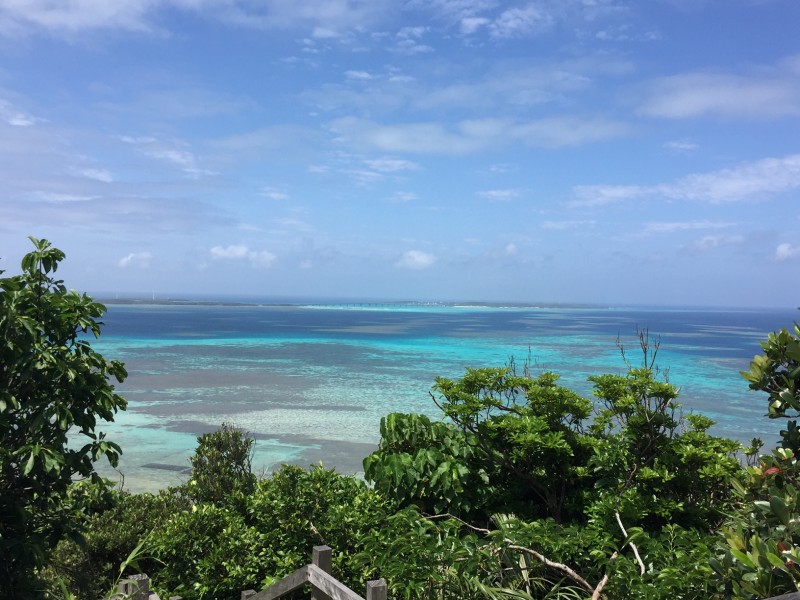
How can you not fall in love with an island of such dazzling blues?
ANA has recently started direct flights from KIX to Miyakojima, an island that lies between the Okinawan mainland and Ishigaki. Not knowing anything about it, I decided to take a long weekend and go explore. It turned out to be utterly delightful, with a population of 56,000 and dazzling Pacific blues extending beyond white sand beaches. Unusually, the island has no mountains and not a single river, so there is no silt spilling into the sea and murkying the water. As a result the coral is pristine.
My prime interest was not the sea however, but the religious leanings of the locals. As part of Okinawa, I expected it to be similar to the Naha heartland with a shamanic past based on women practising a combination of nature and ancestral worship different in form from Shinto. It turned out that was pretty much the case, except that Miyako has its own distinctive style somewhat different from its neighbour. I found it intriguing.
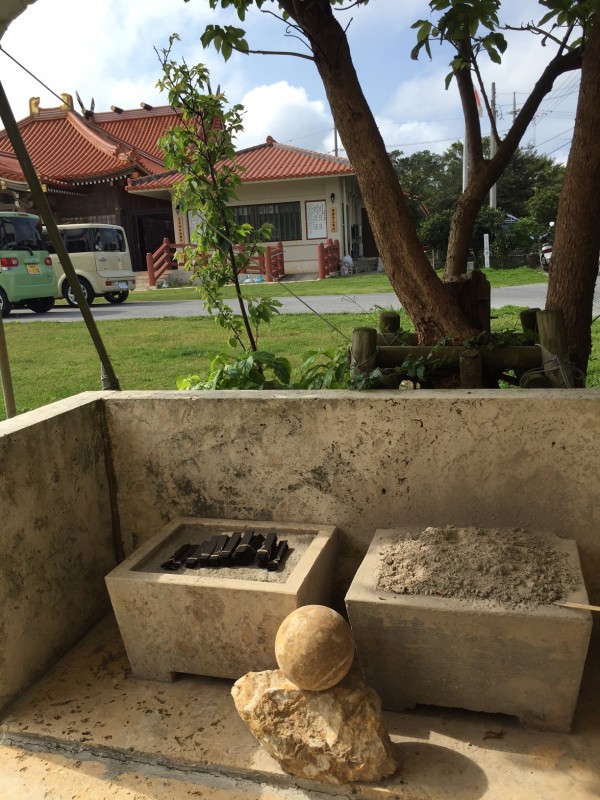
Syncretism, Miyako style: utaki in the foreground and the island’s sole functioning jinja in the background. Some people pay their respects at both. (The utaki style is to light bunches of incense.)
Overwhelmingly, the islanders continue to cling to their traditional religion, despite the pressures of modern life. (There is just one solitary functioning Shinto shrine.) This involves a cult of ancestor worship, involving large tombs crowded together like a small city of the dead. It also involves utaki, which are shrines for nature deities or spirits of place. Some of these are off-limits to tourists, particularly those in the countryside, kept relatively secret in order to preserve their potency. In several cases there were clear syncretic developments with Shinto, particularly in the form of torii leading to an utaki. I gathered from the locals that this was a prewar move by State Shinto to mark the local religion as ‘Japanese’.
The importance attached to the dead is evident from the size of the family tombs. These are like small houses, and there are whole settlements of the dead by the roadside and in clusters outside villages. A simple stone door can be pulled open, and bones added to those already deposited inside. In the past the bones were all mixed together, so that with death you literally joined together with your ancestors. Nowadays the bones are washed and put into a ‘tsubo’ jar and placed in the tomb.
The custom is to sit and drink with the dead, acting as if they are still hanging around and offering them a smoke or something to drink. Bottles and debris could be seen left behing at the tombs (and at utaki too). The mess and general unattractiveness of the concrete structures is in marked contrast to the mainland of Japan, where cleanliness and aesthetics are notable features. The tourist people I spoke to about this said it was a leftover custom from pre-consumer times, which made sense to me. Use and toss away was environmentally fine in an age when virtually every single thing was biodegradable. Practices have not yet caught up with our (sick) modern age.
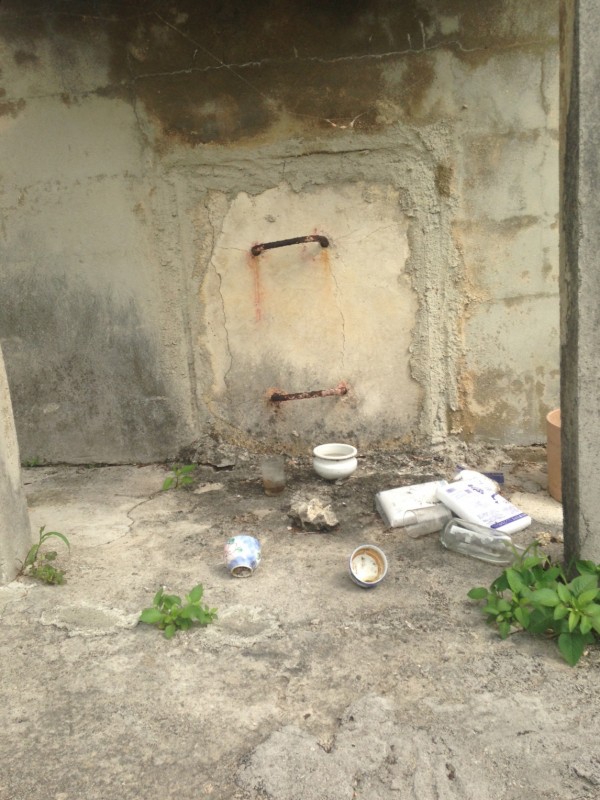
A typical family tomb, with opening for bones to be placed inside and the remains of offerings and sake drinking
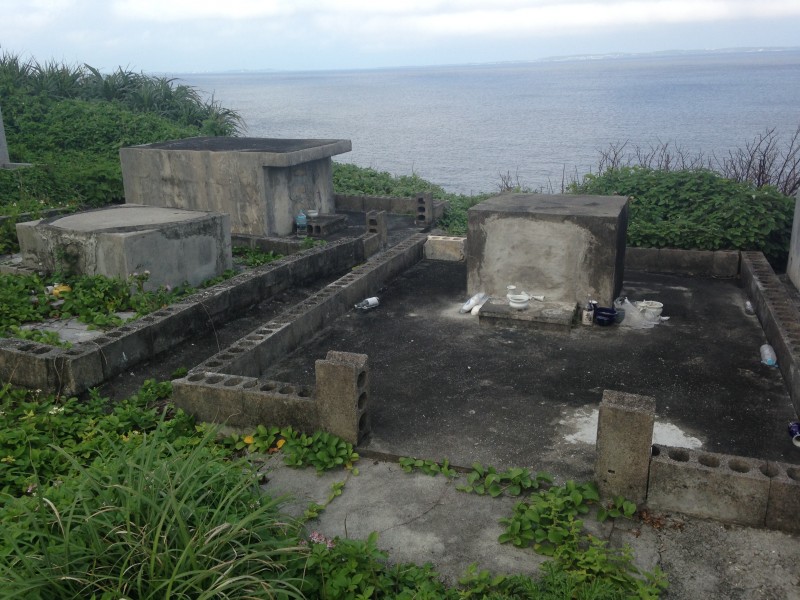
These houses of the dead are family tombs with a view. A prime site one might think for something more appealing than a dismal concrete structure. The size is so as to house multiple generations.
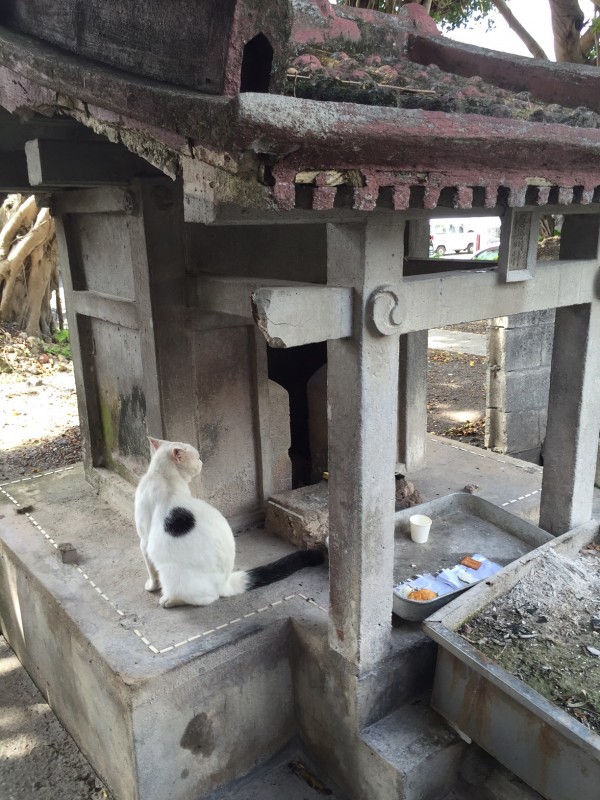
This cat at an utaki clearly had a taste for the spiritual
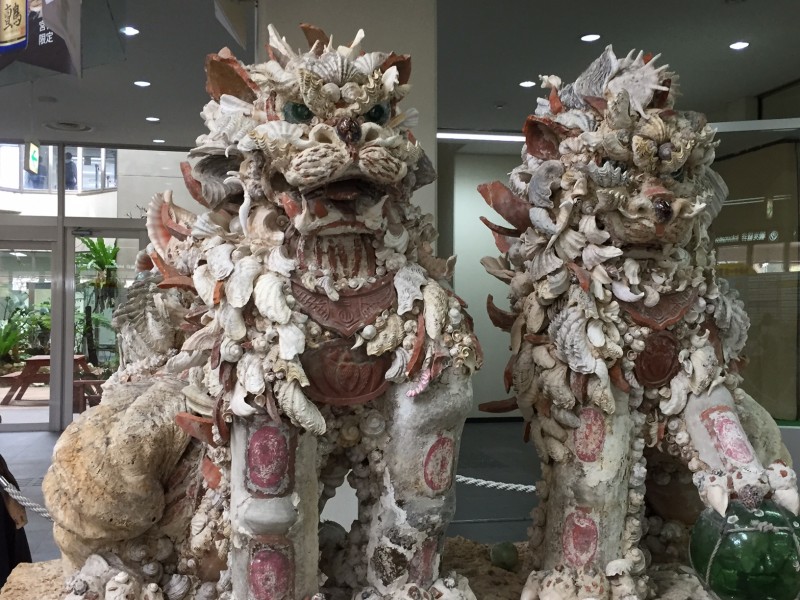
You can’t go far in Okinawa without running into a pair of Shisa, guardian animals like komainu that have one mouth open and one shut. It’s said the female wants to keep in the good, while the male has his mouth open to scare away the bad.

Great story. And the spiritually minded cat pictured reminds me of Whiskers my Japanese Bobtail. Glad you found such a peaceful and beautiful island to explore and thanks for sharing!
And thank you for taking the trouble to write in…